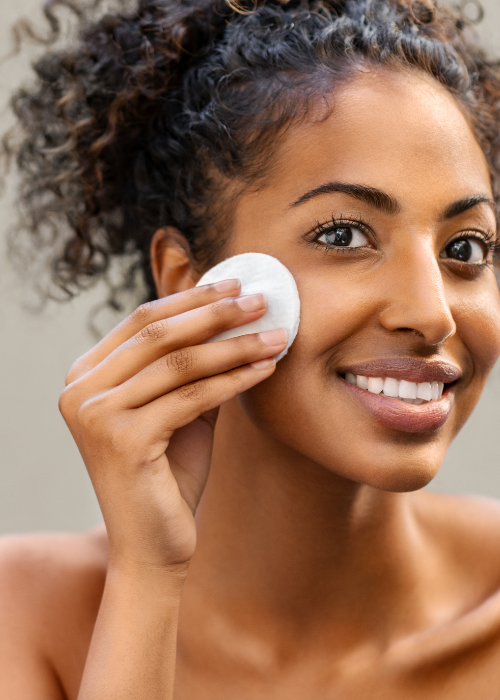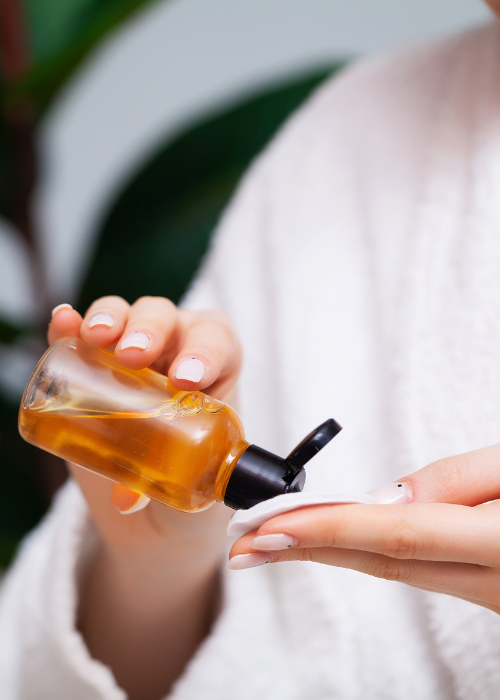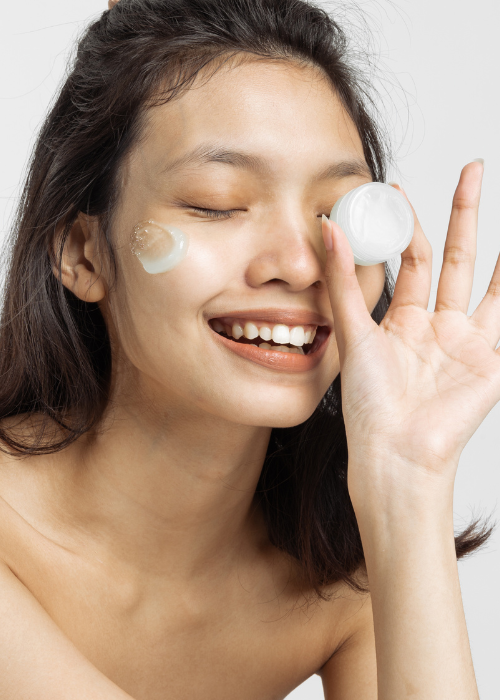Determining the skin type is necessary to determine whether or not skin care is effective. Particularly, mixed skin and oily skin are frequently mistaken, which results in improper maintenance. Please see the article below for more information on how to properly care for oily skin.
How does greasy skin look? Understanding oily skin
A fairly typical skin type is oily skin, commonly known as oily skin. It develops as a result of excessive sebum production from the sebaceous glands under the pores. Oily face skin is common in those with oily skin, especially in the T-zone. Pore size increases as sebum production rises. This makes it possible for bacteria and dirt to enter the skin easily, which can result in blackheads or whiteheads. More gravely, the irritation will cause acne.
Genetics can contribute to oily skin, but physiology, nutrition, and poor facial hygiene are the main culprits. Records indicate that stimulant usage, tension, and stress all worsen oily skin.
Follow these steps to establish whether you have oily skin or not:
Wash your face gently, then pat (don’t use a towel) it dry. After 30 minutes, wipe off the oil from your face using a paper towel. You have oily skin if the paper is sticky and absorbent. In addition, greasy skin is highly photosensitive. So, failing to properly care for your facial skin will result in dull, dark, and rough skin. Even cosmetics can’t hide these defects.
How to care for oily skin
1. Make-up remover

The first step in caring for oily skin is removing makeup. due to the ease with which debris can enter big pores and result with acne. Makeup removal will assist in cleaning the skin and clearing clogged pores.
2. Having a face wash
Sebum and grime might not all be removed with makeup remover. As a result, you shouldn’t miss cleaning your face. Select a cleanser that is suitable for your skin type, and stay away from anything that contain irritants. Furthermore, avoid rubbing your face as this can harm your skin.
3. Basic oil skin care steps: Apply toner

In addition to hydrating the face, toner also helps maintain the skin’s pH balance. This will thoroughly clean the facial skin from the inside out and get rid of any dirt that the previous two stages left behind.
4. Execute Death Celk
By exfoliating twice daily, you can totally get rid of microorganisms and encourage the growth of new cells.
5. Apply special remedies to skin issues
This treatment stage will aid in the improvement of your current skin issues, such as acne, dark spots, scars, etc. Although utilizing the proper sort of treatment will be good for your skin, avoid mixing different types. To avoid side effects, combine therapy and skincare in one process.
6. Moisturizer

It’s a common myth that people with oily skin don’t need to use moisturizer. A moisturizing cream will assist seal in the previous skin care procedures, guard against infection, and moisturize the skin. However, oily skin is also susceptible to dehydration, thus moisturizing creams are required. Dermatologists advise those with oily skin to choose products with thin gel textures, rapid absorption, and non-sticky pores. In order to make the best decision for you, you can refer to our guide on how to choose a moisturizer for skin that is prone to acne.
7. Apply sunscreen
You should use sunscreen whether you have oily, dry, or mixed skin. UV protection, skin protection from sun damage, anti-aging benefits, and radiation protection from electronic devices like phones and computers are some of the impacts of sunscreen lotions. You need to maintain an appropriate diet, get enough sleep, and take care of your oily skin. Limit your intake of fried foods and fast food, and include a range of green vegetables and fruits. Continue to exercise regularly.

What’s up friends, how is everything, and what you want to say regarding this post, in my view its truly remarkable designed
for me.
I was excited to find this site. I need to to thank you for ones time just for this fantastic read!! I definitely enjoyed every part of it and i also have you bookmarked to check out new stuff on your blog.